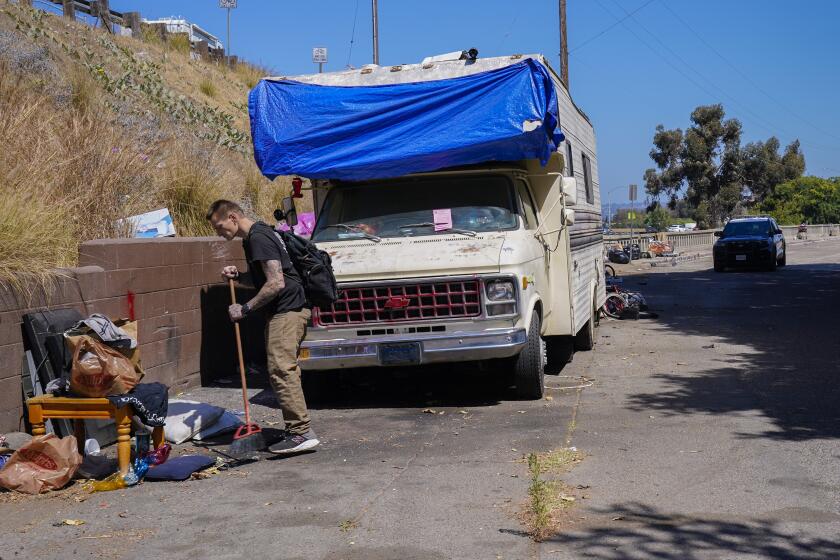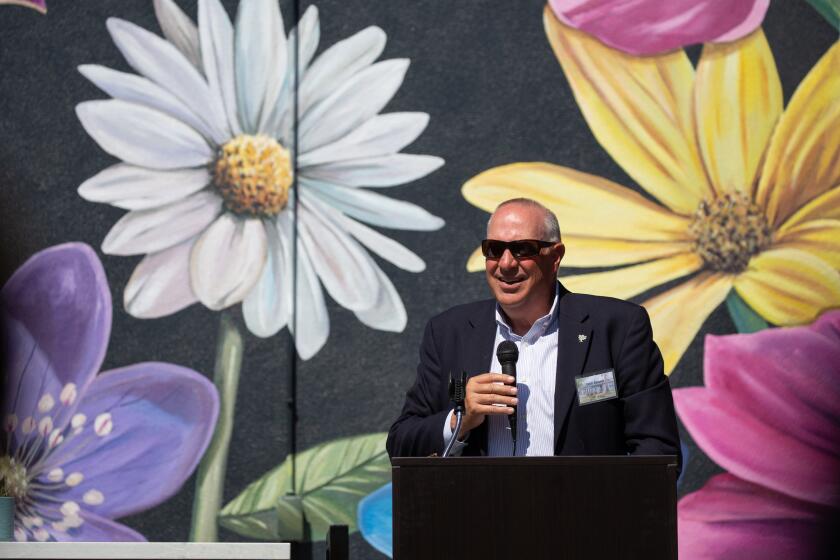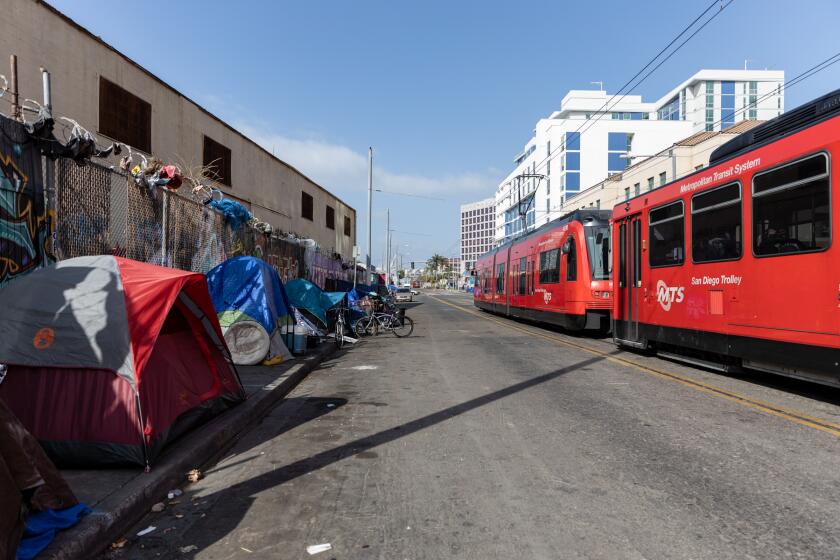Authorities vows to pursue more Indian artifact thefts
Agents for Homeland Security Investigations have tracked down stolen work by Tchaikovsky, paintings by Picasso, ancient Greek artwork and other priceless treasures that been looted over the years.
When it comes to finding some of the oldest artifacts in the United States, however, they admit they could be doing a better job.
On Thursday, members of Homeland Security Investigations, a part of U.S. Immigration and Customs Enforcement, met at Sycuan Tribal Hall with members of Kumeyaay and Luiseño Indian tribes with a goal of creating a stronger partnership between the agencies and people.
Tribal members attending said they appreciated the symposium, the first of its kind, although some were skeptical about the offer. Some tribal members also used the opportunity to voice criticism of what they see as loopholes in laws that let developers and federal agencies desecrate land and loot artifacts.
Everyone agreed that artifacts should be respected, and people who illegally remove them should be caught.
“If these are collected and taken away from the tribal communities, it impedes our ability to educate future generations and to show them the physical reality of their ancestry,” said Cody Martinez, chairman of the Sycuan Band of the Kumeyaay Nation.
As part of the ceremony Martinez was presented with an ancient pot that had been had been recovered after it was taken off tribal land. It will be kept at a cultural museum and resource center the Sycuan Band opened in November.
Martinez handed the pot to Jamul Indian Village Chairwoman Erica Pinto, who put her hand over her heart as she became emotional thinking about its history.
“To know it’s 1,000 years old, it was overwhelming,” she said.
David Shaw, special agent in charge with Homeland Security Investigations, said 204 officers in the US and 63 officers overseas work on fighting illicit trafficking of artifacts, and more than 7,000 pieces from 27 countries have been returned in the past decade. It is the fourth most lucrative illicit trade, behind narcotics, arms and human trafficking, and generates between $6 billion and $8 billion annually, he said.
Shaw said he doesn’t know how much money is generated from the illegal sales of Indian artifacts, which was one of the the reasons they were having a symposium to strengthen partnerships with the community.
Steve Banegas of the Barona Band of Mission Indians said he appreciated the outreach to work together on preserving their heritage.
“Every day somewhere, somehow, somebody is digging up something and destroying it,” he said.
“When I see your agencies today, I get a new-found hope that your heads and your hearts are going to be filled with the realization that the Kumeyaay people have been here for a long time, and it’s necessary to preserve this stuff,” he said.
Banegas also encouraged of tribal members to reach out the agency, and told federal officials the Indians would be there for them.
“If you guys are truly honest and you’re willing to work with this nation, I think we can make some really good headway,” he said to the agents.
Anne Perry of the U.S. Attorney’s Ofice said she was the only local person who had prosecuted anyone for trafficking Indian artifacts, and she has had only one case in 15 years.
Violators are prosecuted under either the Archaeological Resources Protection Act or Native American Graves Repatriation Act, and penalties can range from $10,000 fines and one year in prison to a $250,000 fine and five years in prison.
Prosecutions are rare, she said, because the cases are not brought forward. One officer urged people to share any information that could lead to a case.
“I’m making a pledge that if you make a phone call and bring things to us, we’ll look into it,” said Daniel Hiel, a special agent with Homeland Security Investigations.
Another presenter at the symposium was Cindy Stankowski, executive director of the San Diego Archaeological Center, who said the center’s collection had come from artifacts recovered in development sites as a requirement of the 1974 California Environmental Quality Act.
CEQA had saved artifacts from being lost, she said, but it also had been a double-edge sword because some archaeologists working on sites do poor jobs in protecting what they find.
Her comments struck a nerve with some tribal members.
“There’s no standards with archaeology,” said Brandon Linton of the Mesa Grande Band.of Mission Indians.
Linton said he would like CEQA changed because it has loopholes that allows developers to build where they want as long as they follow the act’s vague rules.
“The law says you have to have meaningful consultations with tribes, but there’s no definition of what meaningful is,” he said. “What’s meaningful to us may not be meaningful to them.”
Other tribal members had issues with the Bureau of Land Management, which some said had built roads and other projects on sensitive land.
“I just want to be clear and on the record that from a tribal perspective, BLM is looting artifacts in our area,” said Bobo Elliot of the Manzanita Band. “The archaeologists working on these projects and with BLM is helping conspire to loot our artifacts.”
One man grilled Tom Zales, field manager in the BLM’s El Centro office, about whether he could name any project that had been denied.
Zales said no, but explained that proposed projects had been abandoned before they ever made it through the approval process because of BLM inspections.
He also said decisions are based on the public interest, and they do their best to mitigate loss.
“I try to listen as carefully as I can and understand your perspectives and take them into account,” he said. “With these contentious projects, we’re never going to completely agree.”
People with information about the illicit trade of cultural property or art are asked to call the Homeland Security Investigations tip line at 866-DHS-2-ICE.
Homeless Playlist


San Diego hepatitis outbreak continues to grow: 481 cases
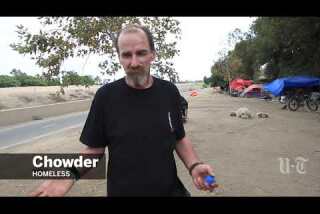
Homeless entrenched in booming tent city along Santa Ana River
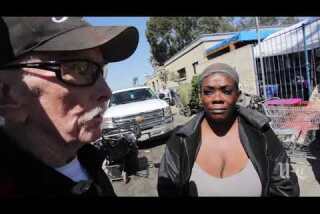
San Diego mayor agreed to homeless hub, then delayed, advocates say

Homeless outreach in San Diego
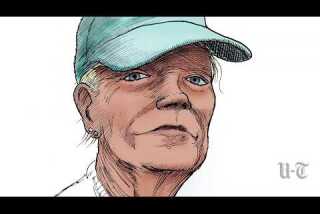
Video: Street Art: Portraits of San Diego's Homeless #8

Street Art: Portraits of San Diego's Homeless #7

Pitching a tent plan for San Diego's homeless

Homeless efforts get $80M boost for various services
760-529-4939
The latest news, as soon as it breaks.
Get our email alerts straight to your inbox.
You may occasionally receive promotional content from the San Diego Union-Tribune.

